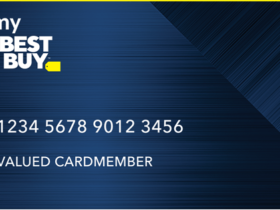In the fast-paced realm of front-end development, the amalgamation of innovative tools and frameworks has been instrumental in shaping sophisticated and effective web applications. Alok Reddy Jakkula’s journey with Kata and React serves as a compelling testament to this evolution, showcasing how the integration of these technologies can revolutionize development workflows and product outcomes. Through his experiences, insights, and contributions, Alok sheds light on the impact of melding Kata—a dynamic HTML authoring system—with React, a powerful JavaScript library for building user interfaces.
The Genesis of Integration
Alok’s introduction to Kata coincided with its early adoption phase within his development team. Kata, with its proposition of simplifying HTML authoring and enhancing code quality through a structured build system, presented a compelling case for integration with React. This amalgamation aimed to leverage Kata’s efficiency in HTML composition and React’s robustness in creating interactive UIs, setting the stage for a harmonious development experience.
Unique Knowledge and Context
The integration of Kata into Alok’s workflow brought a unique perspective on managing HTML structures within React components. The system’s ability to define types, utilize discriminated unions, and implement string literal types directly within templates propelled their front-end code’s reliability and maintainability to new heights. Notably, the transition from traditional HTML authoring to utilizing Kata’s advanced features enabled a more seamless and type-safe integration with React’s component-based architecture.
Insights and Reflections
The fusion of Kata and React illuminated several key insights into front-end development best practices. Alok emphasizes the importance of type safety and code optimization, which became increasingly evident through Kata’s build system. This system not only ensured well-formed HTML but also facilitated the contextual and automatic escaping of content, thereby enhancing security and performance. Additionally, the attribute decorators feature in Kata allowed for a more declarative approach to styling and event handling in React components, aligning with modern front-end development paradigms.
Challenges and Opportunities
While integrating Kata with React presented its own set of challenges, it also brought forth opportunities for growth and innovation. The initial learning curve for adopting Kata’s syntax and methodologies required a dedicated effort from the development team. However, these challenges paved the way for abstracting complex UI patterns into reusable components and templates, significantly accelerating development cycles and promoting code reusability.
Contributions to the Field
Alok’s journey with Kata and React, though not characterized by large-scale projects, has undeniably contributed to the fabric of the front-end development community in meaningful ways:
- Micro-Libraries and Tools: Alok has created and shared small, focused libraries that address specific challenges encountered when integrating Kata with React. These tools aim to streamline particular aspects of development, making the daily workflow more manageable for fellow developers.
- Community Discussions and Online Forums: Despite not leading large conference talks, Alok has actively engaged in online forums, discussion groups, and local meetups as both a listener and a contributor. His participation in these spaces fosters a sense of community and mutual learning, where he shares his experiences and insights on working with Kata and React, engages in problem-solving discussions, and provides feedback and support to peers.
The Road Ahead
As front-end development continues to evolve, the integration of Kata and React stands as a beacon of innovation and efficiency. Alok’s lessons learned from this journey underscore the importance of embracing new technologies and methodologies to address the complexities of modern web application development. Looking ahead, Alok is excited about the potential of further enhancing this integration, exploring new features in Kata, and contributing to the evolution of React to meet the ever-changing demands of the digital landscape.
Conclusion
The journey of integrating Kata with React has been enlightening and transformative for Alok Reddy Jakkula, offering profound insights into the possibilities of modern front-end development. Through sharing his experiences, Alok hopes to inspire other developers to explore this integration, leveraging the strengths of both technologies to create web applications that are not only performant and secure but also maintainable and scalable. As the boundaries of what’s possible in front-end development continue to be pushed, Alok encourages the community to embrace the lessons learned and look forward to a future rich with innovation and collaboration.













Leave a Reply